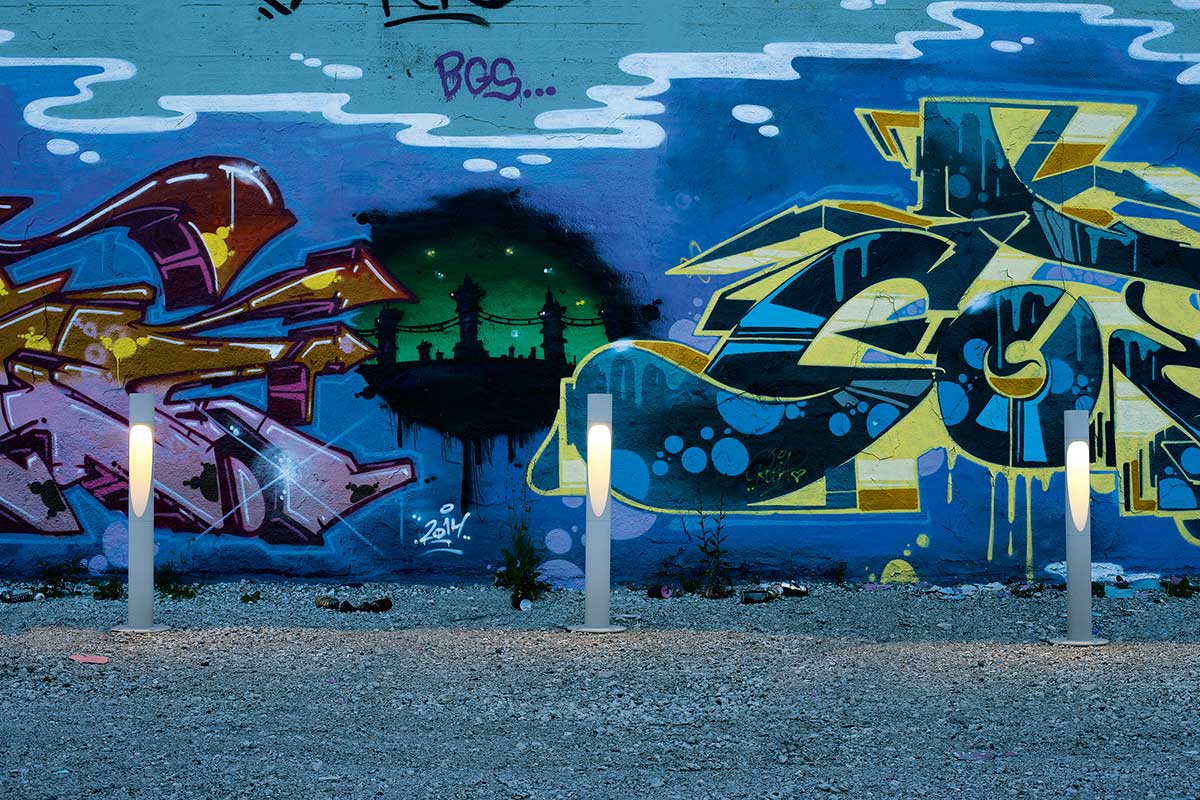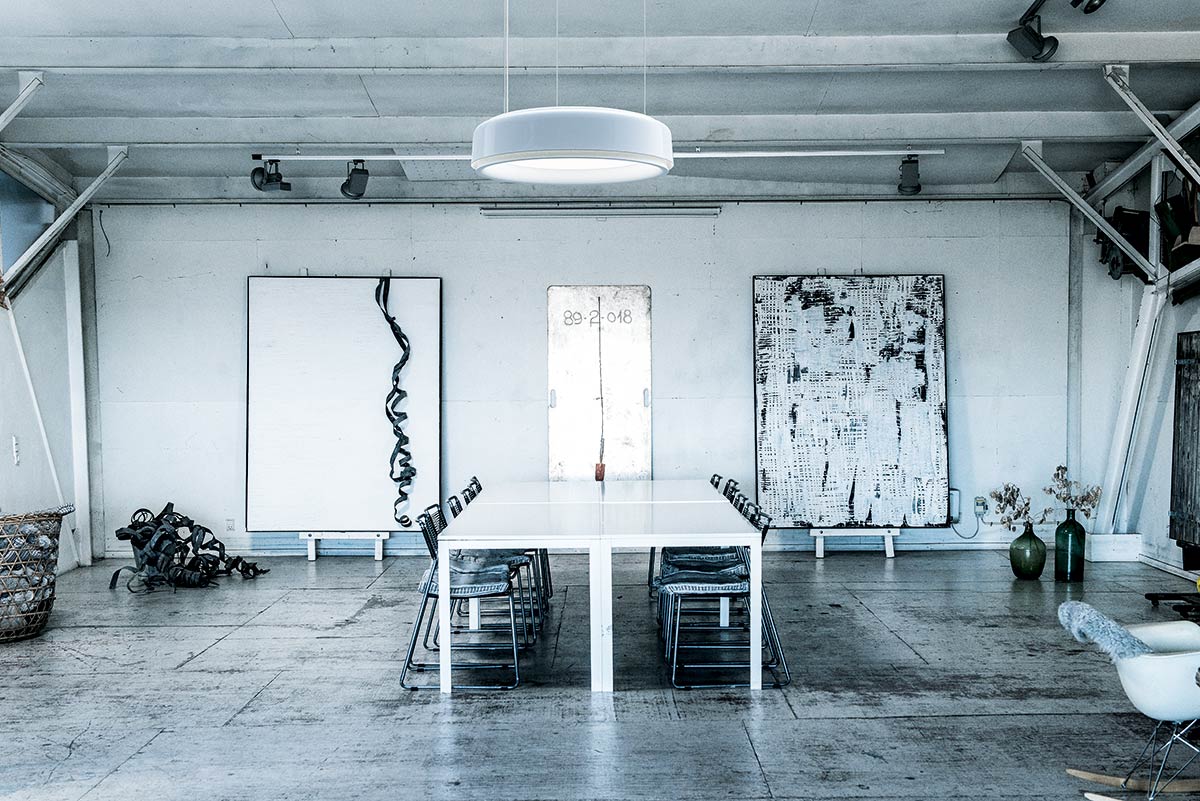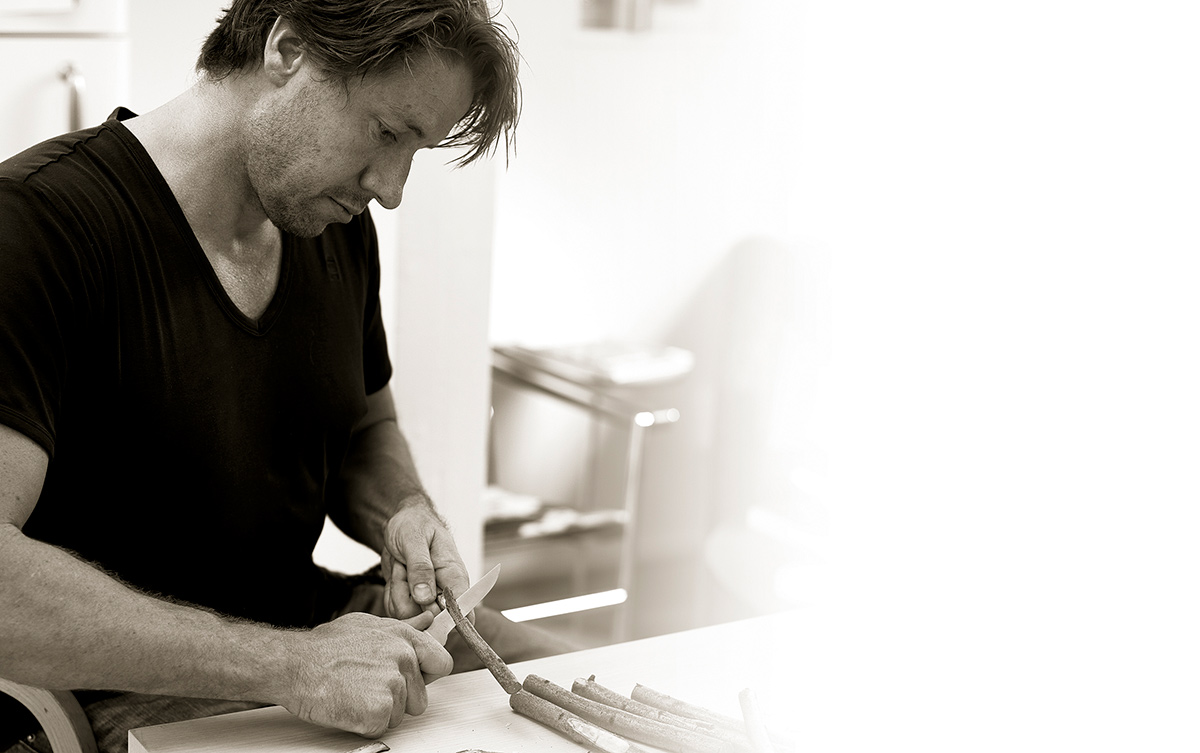We speak to the Danish designer about how he comes up with his innovative and highly functional lighting designs.
Tell us more about how you came up with the Flindt Bollard and LP Grand series of lighting for Louis Poulsen.
The Flindt Bollard started as a custom project. I was asked by Louis Poulsen to come up with an asymmetrical bollard light to illuminate the pathways near an art museum in Viborg, Denmark.

The Flindt Bollard for Louis Poulsen. Image credit: Louis Poulsen
The LP Grand series was a direct brief from Louis Poulsen. They wanted me to develop a series of horizontal architectural lighting fixtures. The lumen output of the largest fixture should be the highest in the Louis Poulsen portfolio, which is to say that architects and interior designers would also have new possibilities in illuminating their rooms and buildings.
How would you describe your design aesthetic?
I’m not so focused on pursuing aesthetics or being known for a signature style. I would like to be associated with many. When I get a new assignment, I try to clear the table and start from scratch and focus on listening to what my client is saying.
Parallel to this professional work, I am also doing my own inspired light and form experiments. I think in this more personal capacity, I tend to work more organic – so that one experiment leads to the next. So you will see overlap in different ways. But hopefully over a handful of years I hope you can’t – I believe that means I have actually evolved.
Can you tell us what considerations you have to make when designing lighting?
I always have three important words in the back of my head: function, comfort and ambience. I always tell myself to make a comfortable light and avoid glare. Try to make it functional and energy efficiency at the same time. And then of course make the light-fixture or installation in a way that it just shows natural light qualities and tells this story when it is switched on and off.

The LP Grand for Louis Poulsen is designed to be large and bright. Image credit: Louis Poulsen
Where do you often find inspiration?
I try to look elsewhere to areas that aren’t already design related. I find a lot of inspiration in architecture, which I still have a big interest in. I also try to visit galleries and museums of modern art and read books about how to think.
How has your foundation in architecture informed your furniture and lighting designs?
During the last years of my architectural studies, I jumped from the bigger scale to the smaller. I took a course where I learnt how to input data in the computer that could come up with self-organising city-planning scenarios. I ended up drowning in computer coding, but the ideas opened a new world and interest in human behaviour. Even though I jumped to furniture, the designs I did for my final project and the first years of my professional life were all about furniture as devices for enhancing social interaction.

The designer believes that good furniture should enhance social interaction. Image credit: Louis Poulsen
What was your biggest inspiration from the design world?
My mother was gallerist and she always to me to different exhibitions when I was young. I’ve never forgotten the magic moment when I got my first meeting or rather “close encounter” with the artwork of the light artist James Turell.
I remember walking, in a big dark room, towards a 5 or 6m-long monochrome deep red painting on a wall. Going closer and closer to be able to see the structure and the pigmenting on the canvas. So close that I suddenly realised that my head should have gone through the painting. The painting wasn’t there – it was just a big square hole in the wall of intense red light.



